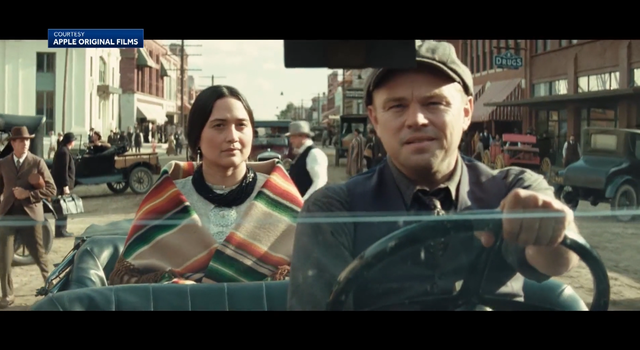By Lynn Venhaus
A sprawling saga exploring the horrific exploitation of Native Americans and how the entitled white interlopers of Fairfax, Okla., manipulated, stole, extorted, and killed them is a true story that needs to be told.
While I’m not declaring “Killers of the Flower Moon” a modern masterpiece like many of my colleagues, I admire the efforts and care that the filmmakers brought to this explosive, gut-wrenching tale of injustice.
Members of the Osage tribe in the U.S. are murdered under mysterious circumstances in the 1920s, after oil is found on their land, and finally, after too much time — and death — has elapsed, it sparks a major F.B.I. investigation started by J. Edgar Hoover.
Martin Scorsese is such a visceral director, with his keen eye for visuals and distinctive way music organically becomes part of his storytelling, that his sweeping view of the prairie and respect for the indigenous people of the land is breath-taking.
And in his expert way, captures the ugly, insidious greed and power plays that overtake this locale in moody, murky images and unsavory incidents. But the decision to concentrate mostly on the villains, who keep getting away with these awful crimes, is hard to watch for 206 minutes. I know, how he depicts corruption is a Scorsese trademark. (But blasphemy — is he the right person to tell this story?)
A densely layered plot becomes one long slow death march, and yes, it’s disturbing. We get to the point quickly about the amoral criminal behavior underway, but the repetitiveness, slow-burn style, makes one impatient for any sign of justice.
Do we need 3 hours, 26 minutes to tell this story? No. Based on American journalist David Grann’s best-selling 2017 nonfiction book “Killers of the Flower Moon: The Osage Murders and the Birth of the FBI,” the work would likely be better served as a mini-series.
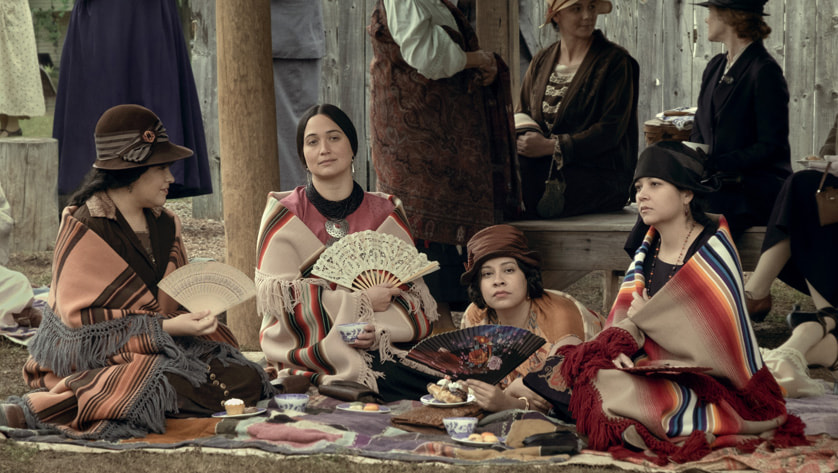
Many characters get the short shrift. You may be hard-pressed to recall their characters or the way they fit into the puzzle: Tantoo Cardinal, JaNae Collins, Jillian Dion, William Belleau, Louis Cancelmi, Tatanka Means, Michael Abbot Jr., Pat Healy, Scott Shepard, Jason Isbell and Sturgill Simpson, although you’ll remember Cara Jade Myers as Mollie’s wronged sister Anna, who is brutally murdered, and Tommy Schultz as Blackie Thompson, who figures in to some of the earlier shenanigans.. And then, Brendan Fraser and John Lithgow show up, ever so briefly, as attorneys near the end.
With its $200 million price tag, it is technically brilliant, with exceptional cinematography by Rodrigo Prieto (who also did “Barbie” this year!), and stunning production design by Jack Fisk.
Yet, I can’t ignore the flaws in the storytelling. At times, it’s cold, flat, and airless because it’s hard to root for people. As the Osage daughter Mollie, Lily Gladstone is the heart of the film, but that’s a lot to carry on her shoulders – although she’s definitely the secret weapon. She will be in the awards conversations at year’s end.
Scorsese, and co-writer Eric Roth, concentrated on the improbable romance of opportunistic Ernest Burkhart (Leonardo DiCaprio) and Gladstone’s Mollie Kyle, and what happens in their orbit is indicative of the behaviors of the time.
By 1872, the U.S. government had forced the Osage from their ancestral homeland to Oklahoma, and at the turn of the century, oil was discovered, which brought a fortune to the Osage nation. Because they became some of the wealthiest people in the world overnight, that didn’t sit well with the old-white-guys network, who would systematically destroy and take over any way possible to get their hands on that money from the ‘black gold.’ For some, that involved marrying an Osage, and becoming the heir.
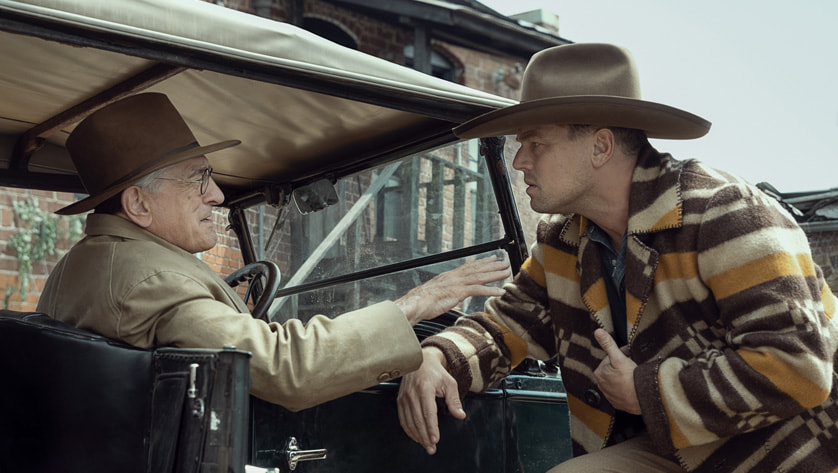
Robert De Niro is sensational in a strong sly performance as William Hale, the town’s kingpin — interestingly enough, nicknamed “King.” He controls everything, and pretends to be a great friend to all. Those in his employment do his dirty work, and the despicable deeds start piling up, too many to ignore. Scorsese brings out DeNiro’s best, and since 1973, they have made 10 films together.
Hale is Ernest’s uncle. And Ernest has arrived after serving in World War I, as a cook, who can’t do manual labor but is eager to make money. He starts out as a taxi driver, where he meets Mollie, and hopes sparks will fly. They eventually marry and have three children. DiCaprio, always interesting, goes to the dark side here, disheartening for his loved ones when the truth eventually comes out. It’s DiCaprio’s sixth feature collaboration with Scorsese, since “The Gangs of New York” in 2002.
Enter Jesse Plemons as FBI agent Tom White, who seems like he could be intimidated, but is brave enough to pursue righting wrongs. He comes in later in the second act, which is interesting because the book concentrated on his narrative.
The performances are superb, although Leo’s bulldog grimace wears thin as does his period-appropriate dental work (yikes). Does subtly sinister suit the golden boy? Jury’s out, but thankfully, his portrayal is more conflicted than sympathetic.
But Gladstone is remarkable, her fierce intelligence shining through as the betrayed wife. I was impressed with her work in Kelly Reichardt’s 2016 indie movie “Certain Women,” so happy to see attention being paid.
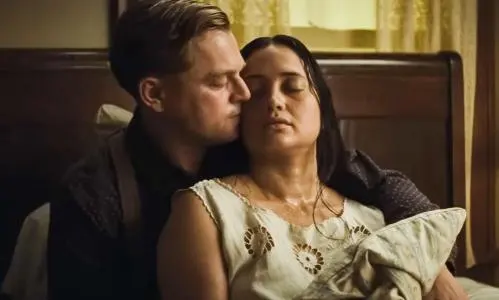
Robbie Robertson’s music score is so organic that at times, you will not notice it. As a member of The Band and a great friend of Scorsese, they have worked together on soundtracks before – “Raging Bull,” “The King of Comedy,” “The Color of Money” and “The Irishman,” after their legendary documentary collaboration “The Last Waltz” in 1978.
Now that Robertson has passed (Aug. 9), the film is dedicated to his memory. He was a Native American as well – the son of a Cayuga and Mohawk mother and lived on the Six Nations Reserve in Canada southwest of Toronto during his youth. So that’s a special connection.
For its unusual finale, the film jarringly shifts to a radio show, which gives a razzamatazz wrap-up of all the corruption and dastardly deeds that have transpired.
Overall, the film is a haunting reminder of the atrocities committed against the Osage Nation specifically and indigenous people in general, and for that, it should spark outrage, which is necessary.
Perhaps watching it again when it streams on the small screen (No date as yet, just ‘later on Apple TV+), I will find more nuance and make a stronger emotional connection. It is a story that needs to be told.
“Killers of the Flower Moon” is a 2023 historical western true crime drama directed by Martin Scorsese and starring Leonardo DiCaprio, Robert DeNiro, Lily Gladstone, Jesse Plemons. Cara Jade Myers, Brendan Fraser, John Lithgow, Tommy Schultz
Rated: R for violence, some grisly images, and language, the run time is 3 hours, 26 minutes. It opens in theatres Oct. 20 and will stream on Apple TV+ at a later date, to be announced. Lynn’s Grade: B-
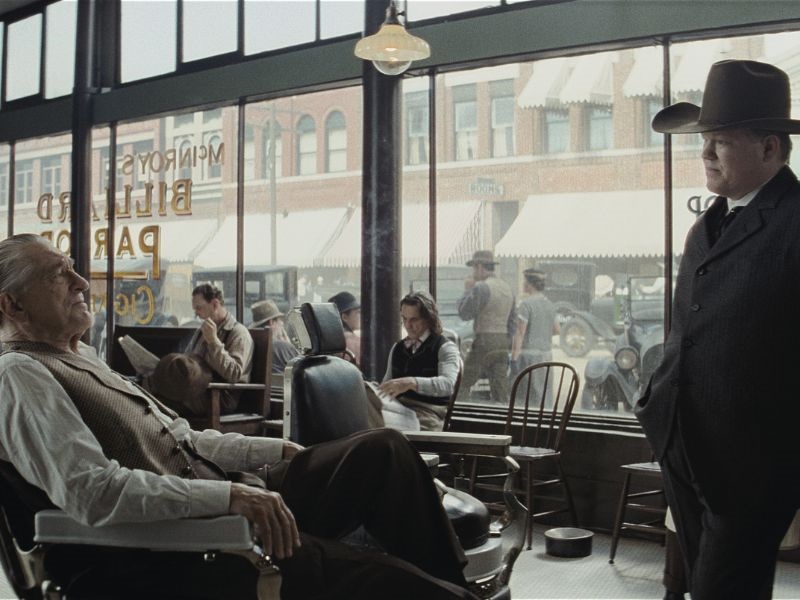

Lynn (Zipfel) Venhaus has had a continuous byline in St. Louis metro region publications since 1978. She writes features and news for Belleville News-Democrat and contributes to St. Louis magazine and other publications.
She is a Rotten Tomatoes-approved film critic, currently reviews films for Webster-Kirkwood Times and KTRS Radio, covers entertainment for PopLifeSTL.com and co-hosts podcast PopLifeSTL.com…Presents.
She is a member of Critics Choice Association, where she serves on the women’s and marketing committees; Alliance of Women Film Journalists; and on the board of the St. Louis Film Critics Association. She is a founding and board member of the St. Louis Theater Circle.
She is retired from teaching journalism/media as an adjunct college instructor.

